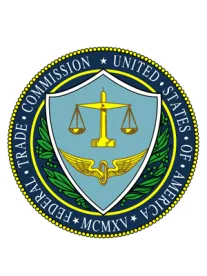Pursuant to an initiative entitled “Operation Full Disclosure,” the Federal Trade Commission (FTC or the Commission) recently sent warning letters to more than 60 companies—including 20 of the largest advertisers in the country—that the Commission claimed had failed to make adequate disclosures in their TV and print ads, and issued a related press release.
In the warning letters, the Commission identified advertisements the Staff considered legally problematic because the important information needed to avoid misleading consumers was in fine print or otherwise hard to find or read. For example, according to the Press Release, some ads referred to the price of a product or service, but did not “clearly and conspicuously” disclose the “strings” attached, such as the fact that a “risk free” or “worry free” trial period required the consumer to pay for return shipping. Weight-loss ads contained testimonials claiming “outlier” results without adequately disclosing that consumers generally could not expect such results (or the results to expect, as required under FTC guidelines on testimonial advertising), and some ads failed to adequately disclose safety issues. In the warning letters, the FTC Staff threatened to bring suit if advertisers did not bring their practices into compliance.
A Commission official, Lesley Fair, blogged suggestions on what she believes to be necessary to assure that a disclosure of important information is “clear and conspicuous” on the basis of what she called “the 4Ps,” fully quoted as follows:
Prominence. Is the disclosure big enough for consumers to read easily? The fine-print “disclosure” and its TV cousin, the fleeting super, have long been the subjects of FTC law enforcement. Consumers shouldn't have to scan an ad with a magnifying glass to pick up on material details of the deal. TV advertisers face the additional wild card of varying screen sizes. Regardless of whether a person is looking at the ad on a home theater system or a handheld device, small type can be easy to overlook. Furthermore, consumers shouldn’t have to be speed readers to grasp the message. FTC cases have challenged supers that flashed for just a brief period, lines of fine print on a single screen, and hard-to-read sentences over multiple screens. Consider contrast, too. White text on a light or variegated background isn't likely to be noticed. Nor will a fine-print statement that has to compete with a dynamic and distracting image.
Presentation. Is the disclosure worded in a way that consumers can easily understand? Using legalese or technical terminology reduces the likelihood that consumers will get the message. Burying important information in a dense block of text is another common tactic that signals “don't read me.” In one FTC settlement, for example, material information about the terms of the transaction appeared after an advertiser’s long litany of trademark information. In another case, a company used an intricately embellished all caps font. That may be fine for the logo of a heavy metal band, but it's not a presentation designed to convey critical information to consumers.
Placement. Geography matters. Is the disclosure in a place where consumers are likely to look? An FTC settlement challenged as ineffective a key disclosure that ran down the side of a print ad perpendicular to the main text. Another case dealt with information conveyed in small type in the upper left corner of a full-page newspaper ad. And given all the talk about footnotes, the bottom of the page or screen isn't a place most consumers will look.
Proximity. Is the disclosure close to the claim it modifies? Tiny type aside, another problem with footnotes is their distance from the prominent headline or splashy text designed to draw the consumer in. If you need to include key qualifications or conditions, remember this maxim: What the headline giveth, the footnote cannot taketh away. And don't think an asterisk will always solve the problem. There's a reason it's called an aste-risk.
Ms. Fair concluded by stressing that “clear and conspicuous” is a performance standard, not a font size. If the disclosure is sufficient to be noticed, read, and understood by consumers, it is clear and conspicuous.
It should be kept in mind that the warnings and advice furnished by the FTC as to the need for “clear and conspicuous disclosure” in advertising applies as well to state attorneys general enforcement and consumer class actions.


 />i
/>i

